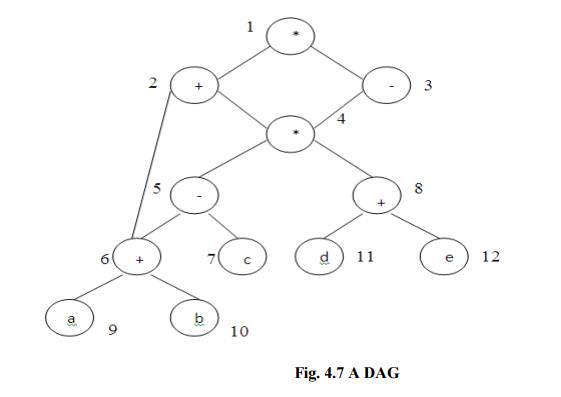Chapter: Principles of Compiler Design : Code Generation
Generating Code From DAGs
GENERATING CODE FROM DAGs
The advantage of
generating code for a basic block from its dag representation is that from a
dag we can easily see how to rearrange the order of the final computation
sequence than we can start from a linear sequence of three-address statements
or quadruples.
Rearranging the order
The order in which
computations are done can affect the cost of resulting object code. For
example, consider the following basic block:
t1
: = a + b
t2
: = c + d
t3
: = e - t2
t4
: = t1 - t3
Generated code sequence for basic block:
MOV
a , R0
ADD
b , R0
MOV
c , R1
ADD
d , R1
MOV
R0 , t1
MOV
e , R0
SUB
R1 , R0
MOV
t1 , R1
SUB
R0 , R1
MOV
R1 , t4
Rearranged basic block:
Now t1 occurs immediately before t4.
t2
: = c + d
t3
: = e - t2
t1
: = a + b
t4
: = t1 - t3
Revised code sequence:
MOV
c , R0
ADD
d , R0
MOV
a , R0
SUB
R0 , R1
MOV
a , R0
ADD
b , R0
SUB
R1 , R0
MOV
R0 , t4
In this order, two instructions MOV R0 , t1 and
MOV t1 , R1 have been saved.
A Heuristic ordering for Dags
The heuristic ordering
algorithm attempts to make the evaluation of a nod the evaluation of its
leftmost argument. The algorithm shown below produces the ordering in reverse.
Algorithm:
1)
while unlisted interior nodes remain do
begin
2)
select an unlisted node n, all of whose
parents have been listed;
3)
list n;
4)
while the leftmost child m of n has no
unlisted parents and is not a leaf do
begin
5)
list m;
6)
n : = m
end
end
Example: Consider the DAG shown below
Initially,
the only node with no unlisted parents is 1 so set n=1 at line (2) and list 1
at line (3). Now, the left argument of 1, which is 2, has its parents listed,
so we list 2 and set n=2 at line (6). Now, at line (4) we find the leftmost
child of 2, which is 6, has an unlisted parent 5. Thus we select a new n at
line (2), and node 3 is the only candidate. We list 3 and proceed down its left
chain, listing 4, 5 and 6. This leaves only 8 among the interior nodes so we
list that. The resulting list is 1234568 and the order of evaluation is
8654321.
Code sequence:
t8 : = d + e
t6 : = a + b
t5 : = t6 - c
t4
: = t5 * t8
t3
: = t4 - e
t2
: = t6 + t4
t1
: = t2 * t3
This will yield an optimal code for the DAG on
machine whatever be the number of registers.

Fig.
4.7 A DAG
Related Topics